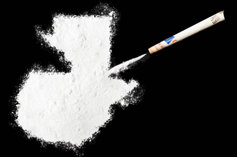Guatemala Cocaine Abuse Problem

The drug trafficking problem that used to be the United States’—the problem that used to be Mexico’s—has to a great degree been pushed into Guatemala. Following the drug trafficking trade’s push into Guatemala is fear, intimidation, torture, and murder.
Guatemala lies directly in the path of cocaine moving from Colombia to the United States. In the 1980s, as cocaine trafficking experienced explosive growth in the U.S., much of the product was entering via Miami and South Florida. The U.S. government began to push back against drug traffickers with special law enforcement bodies, electronic surveillance and spy planes. This push was effective in breaking up the South Florida trafficking pattern, but as usually happens, the drug traffickers just moved their operations elsewhere.
Mexican Cartels Move into Guatemala
When they began to lose too much of their product, drug lords shifted their trafficking patterns from South Florida to move the cocaine across the U.S.-Mexico border between Tijuana and Brownsville, Texas. But this meant that their cocaine had to be on the ground in Mexico and that meant vulnerability, both of product and those moving the drugs. When the Mexican government began their own assault on drug traffickers about two years ago, some of these organizations began to take refuge just across the southern border of Mexico in Guatemala.
After all, Guatemala had just been through an extended civil war. There were federal troops, accused of human rights atrocities during the conflict, who could be and were recruited by the Mexican traffickers for help managing the Guatemalan officials, law enforcement and civilians. The judicial system was weak and prosecution for drug crimes was extremely unlikely. It was a great place for drug traffickers to call home.
Guatemala’s Recent History Made the Country Perfect for Illicit Activities
Before this even took place, Guatemala had a dismal reputation for government corruption and a history of facilitating money laundering through its financial institutions. So it was easy for the drug cartels to set up shop in various locales around the country.
The Zetas, the organized crime group composed of former Mexican military that supports the Gulf drug trafficking cartel, have established quarters in the north, where Guatemala borders Mexico, and near the capital city, Guatemala City. In 2009, the arrival of federal troops looking for drugs instigated a shootout with members of the Zetas that left five officers dead. In the warehouse they were investigating, surviving officers found $3.4 million in drugs including 178 pounds of cocaine, two armored cars, 584 grenades, 8 landmines, 11 machine guns and police uniforms. The weapons had come from the Guatemalan military.
Today, at remote airstrips serving coffee and cotton plantations, small planes land with their shipments of cocaine and either unload their cargo for shipment by truck to larger airports or seaports or they refuel and continue on their way. The single radar facility near Guatemala City hasn’t a prayer of detecting this traffic.

Each year, it’s estimated that nearly 400 tons of cocaine makes its way through Guatemala on their route to the United States. This is 75% of the total cocaine supply arriving in the U.S. This makes cocaine trafficking a $7 billion dollar annual business for Guatemala.
Of all the damaging effects this drug trafficking has on the country, just one serves to paint the grim picture: In 2008, 40% or more of the country’s 6,200 murders were related to drug trafficking.
Now, heroin manufacture is being added to the mix. In the last few years, the amount of land dedicated to the agriculture of the opium poppy in Guatemala has tripled. The poppies are converted to paste and sold to Mexican cartels. In addition to its other problems, Guatemala has now become the fourth or fifth largest opium producer in the world.
Even the U.N. has gotten involved in trying to salvage the country. They have convened the United Nations Commission Against Impunity in Guatemala, to assist in investigations of civilian police, government, and justice officials. The head of this commission stated in December 2008 that “if the Guatemalan authorities are unable to stop the infiltration of Mexican drug cartels, in two years they could take over Guatemala City.”
How Do You Reclaim a Country from Drug Traffickers?
In this case, it’s obvious that part of the solution is governmental and law enforcement. But part of the solution will always reside with the citizens. Steering young citizens away from substance abuse and away from involvement with drug traffickers is best done with accurate drug education.
Those who become embroiled in drug abuse and addiction need much more help than drug education. In this case, the Narconon drug treatment program offers those who have lost the battle with addiction a drug-free way of recovering that life they lost to substance abuse. In some near 40 locations around the world, those who have become addicted to drugs and alcohol find that they can wake up to an enjoyable life each day, with their drug addiction left far behind them.
 ®
®